Birds (excluding hummingbirds)
Almost without trying, I tallied 23 new species of birds (or 22, depending on which guidebook you use, more on this below) on this trip. Thus, in two trips, my total of new birds exceeded 100. The total for this trip would have been much higher had I not taken the first one, obviously, as many birds I saw on this second trip I had already seen on the first. The bulk of the birds I have seen and photographed were at the Bosque de Paz Lodge in Bajos del Toro because of the length we stayed (4 days, or more than half of our total trip time), and the environment (it is right next to Juan Castro Blanco National Park. One of the first birds I saw upon arrival was a couple of Black Phoebes hawking insects outside the lodge. I had seen them before in California, but it was alwasy good to be greeted by an old friend. Another "old friend" is the flock (20-30) of Black Guans that hang out around the hotel grounds all the time -- they have become dependent on the bird feed that hotel staff put out, and they have become very tame (which is not really a good thing). (Click on each image to see the high-resolution version)
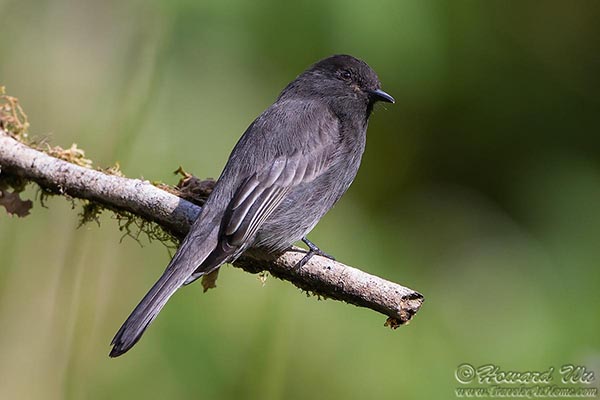
Black Phoebe
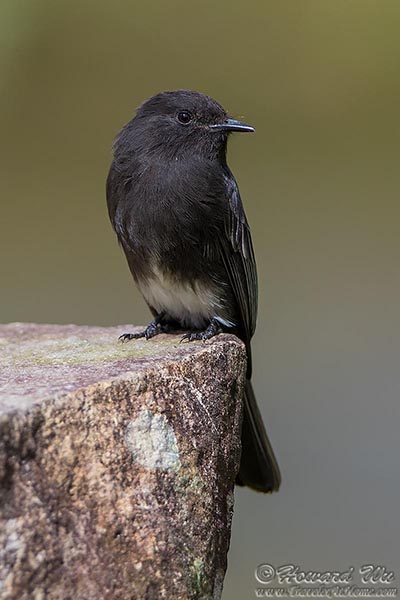
Black Phoebe
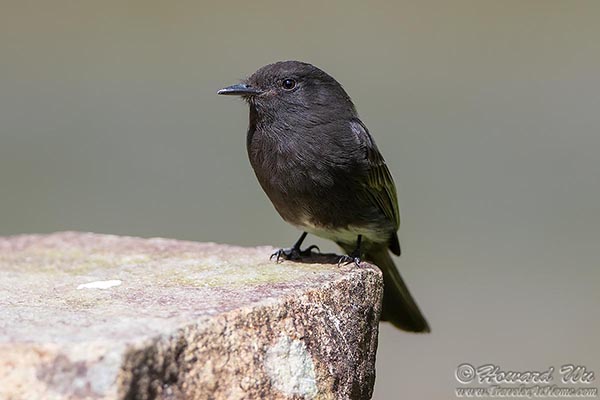
Black Phoebe
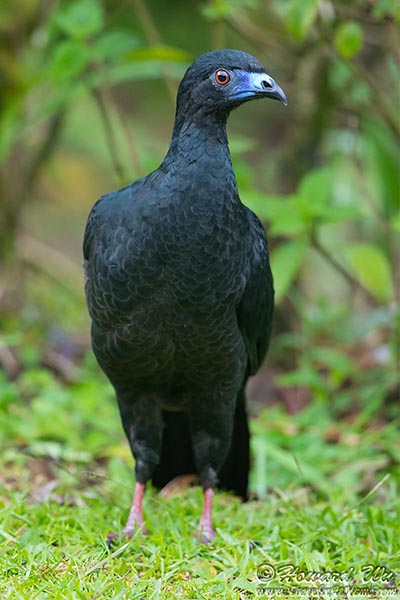
Black Guan

Black Guan

Black Guan
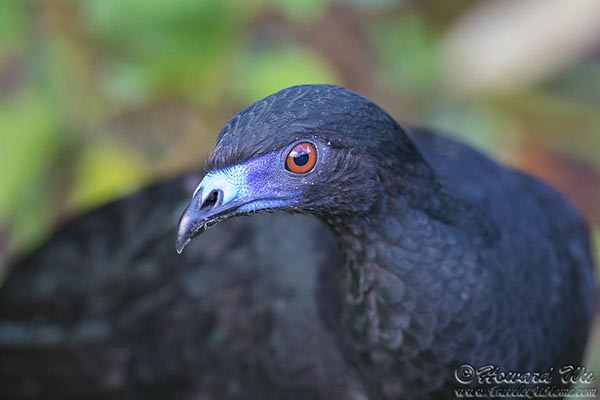
Black Guan
But of course there were no shortage of new birds. Shortly after our arrival, I spotted a Chestnut-capped Brush Finch which was to be my first new bird (the picture below was taken some time later).
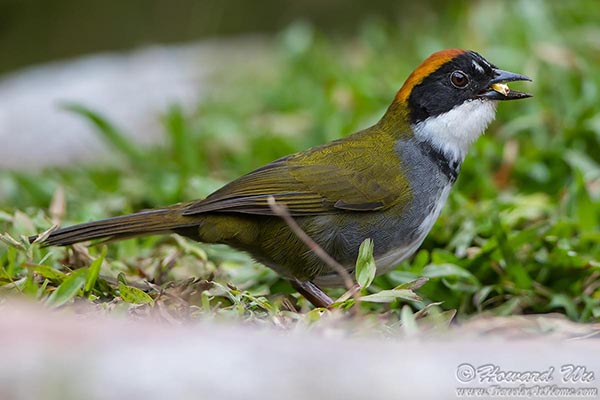
Chestnut-capped Brush Finch
The hotel staff put up a fruit feeder, many fruit-loving birds came to feed. Most numerous among these are the Common Bush Tanagers (Common Chlorospingus, whose name has been recently changed) and Silver-throated Tanagers, both were new to me.
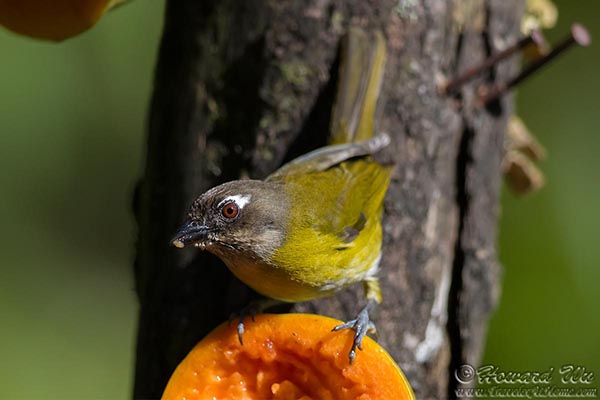
Common Bush Tanager
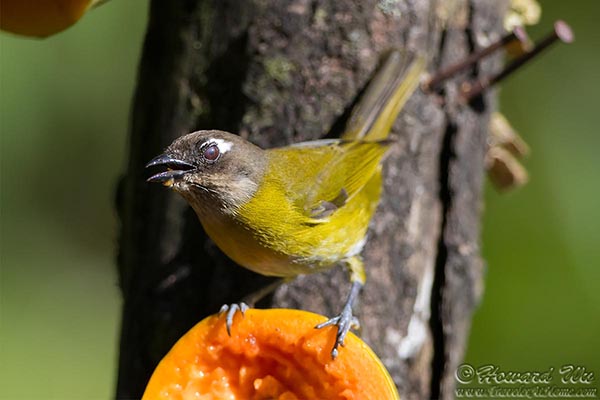
Common Bush Tanager
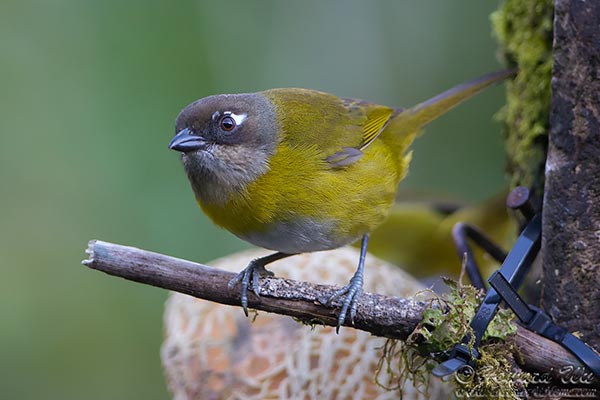
Common Bush Tanager
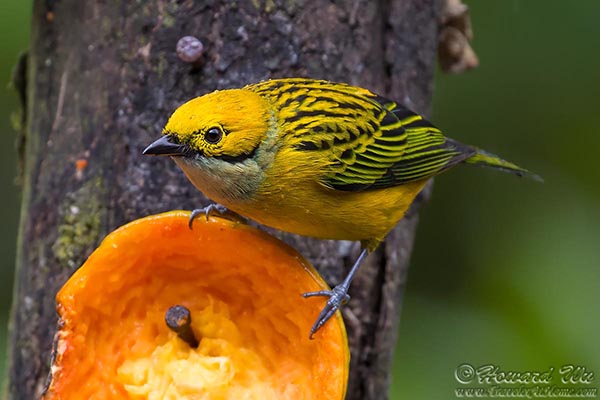
Silver-throated Tanager
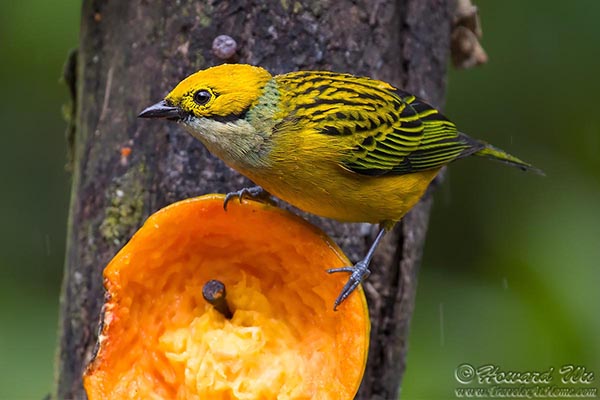
Silver-throated Tanager
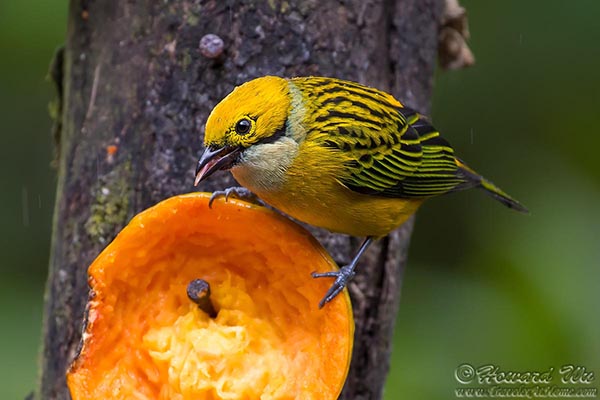
Silver-throated Tanager
Another active bird around the hotel was the Yellow-thighed Finches, a bird aptly named (but they seem to favor grain instead of fruits).
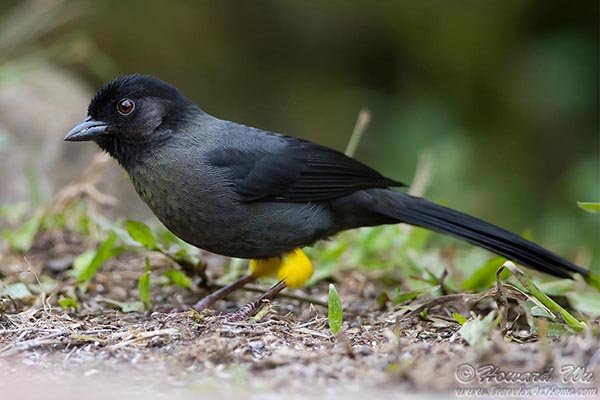
Yellow-thighed Finch
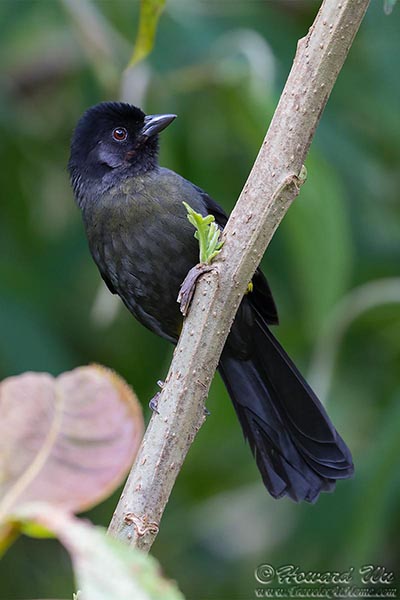
Yellow-thighed Finch
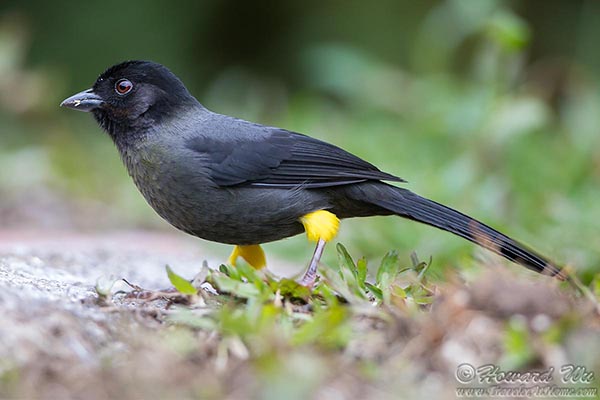
Yellow-thighed Finch
Another bird is a familiar one to me: the Clay-colored Thrush, Costa Rica's national bird.
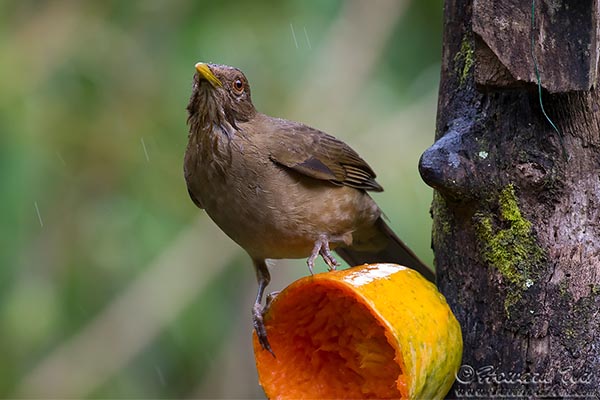
Clay-colored Thrush
Now, trogons. This is a very interesting story. One day, we spotted a trogon on a trail in the forest. I identified this to be a Collared Trogon. This in itself was interesting because some authorities recognize it as a separate species from the Orange-bellied Trogon, which I had seen; but some other authorities treat them as color morphs of the same species (I had seen the Orange-bellied in Monteverde on our last trip).
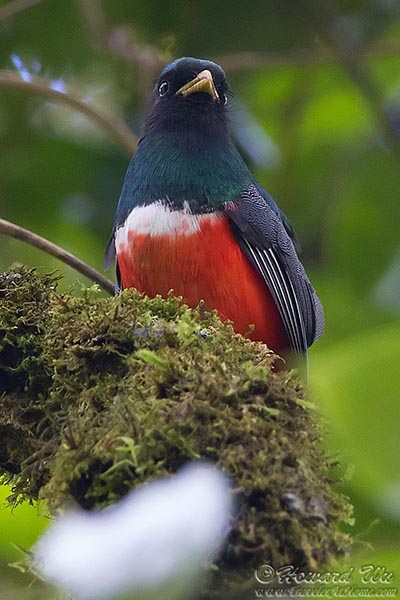
Collared Trogon (male)
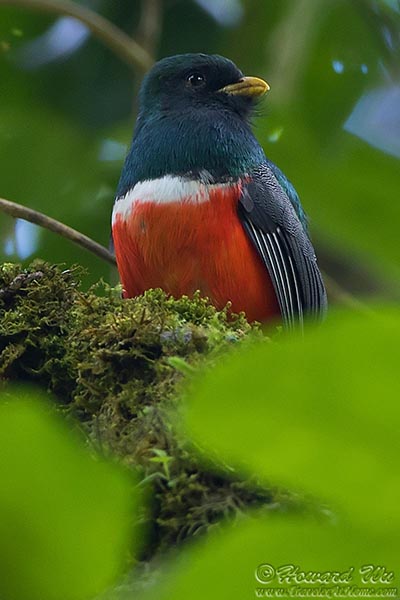
Collared Trogon (male)
Two days later, in roughly the same area, I spotted a female trogon whose belly was decidedly orange; thus, this must be an Orange-bellied Trogon.
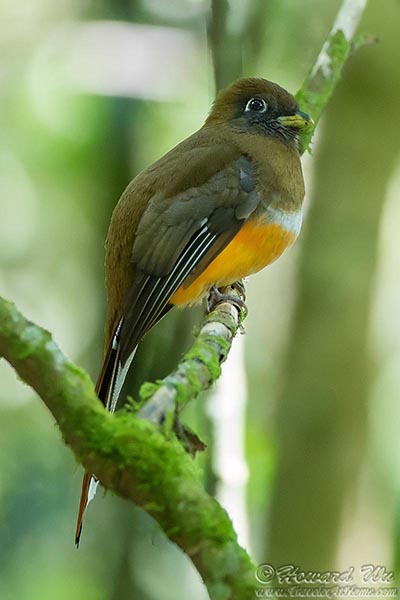
Orange-bellied Trogon (female)
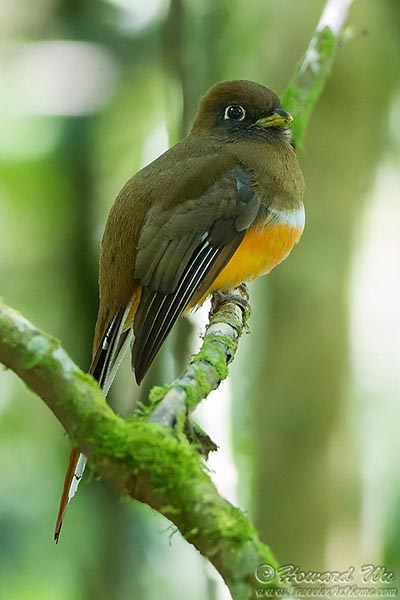
Orange-bellied Trogon (female)
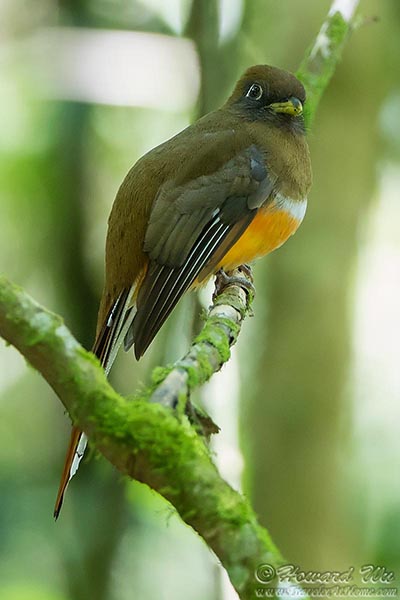
Orange-bellied Trogon (female)
But on the same day, in the same area, just moments later, I spotted another male (not shown) and female (shown below) with red bellies (there is another picture of the bird below that shows part of its belly). Thus, in two days, I spotted 2 female trogons, 2 male trogons (or 1; the second male could be the same bird as the one seen the day before), of 2 different species, or 2 different color morphs of the same species. Go figure!
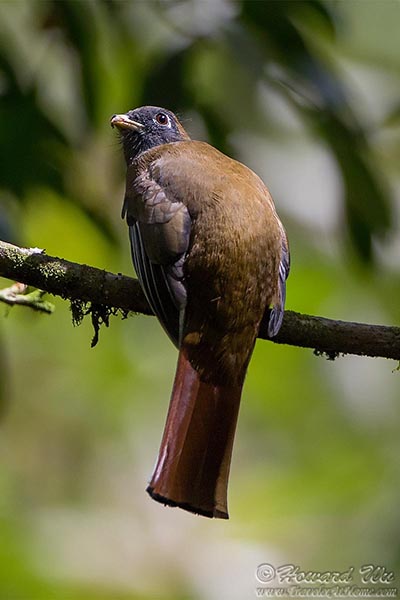
Collared Trogon (female)
Another interesting bird that I saw was a Slaty Flowerpiercer, a nectar-robber (they drink the nectar while damaging the flowers without pollinating them).
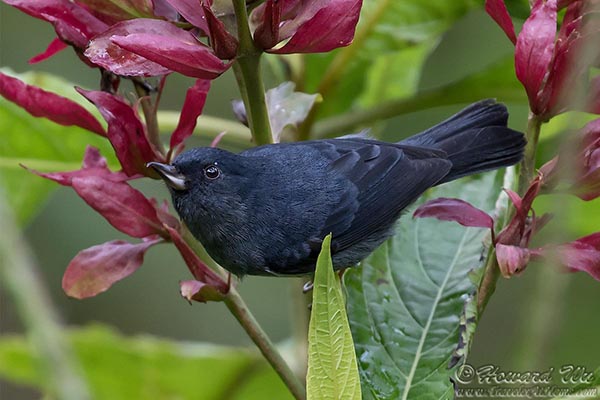
Slaty Flowerpiercer
This Red-faced Spinetail was also a new bird for me.
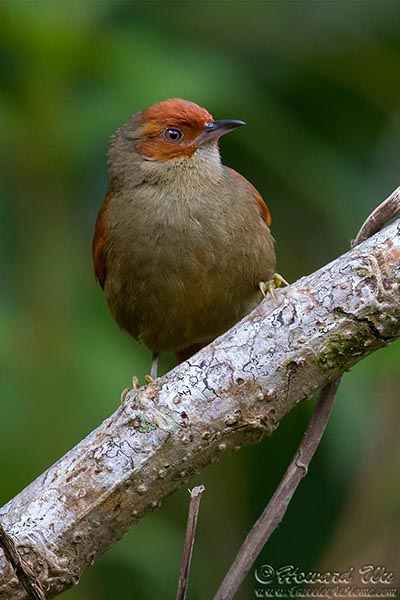
Red-faced Spinetail
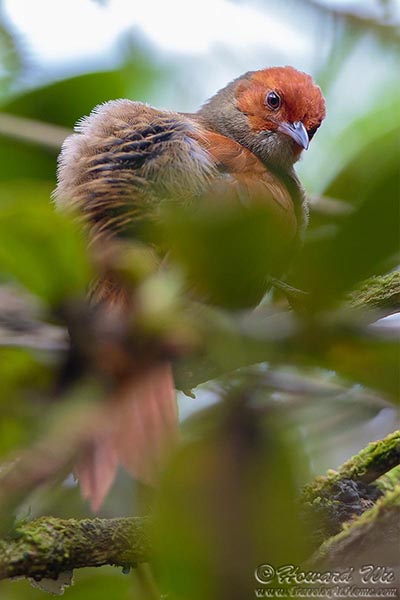
Red-faced Spinetail
One of the most beautiful bird that I saw was the Slate-throated Redstarts, a non-migratory wood warbler. I've always been fond of wood warblers, and it was gratifying to see this species that we cannot see in North America.
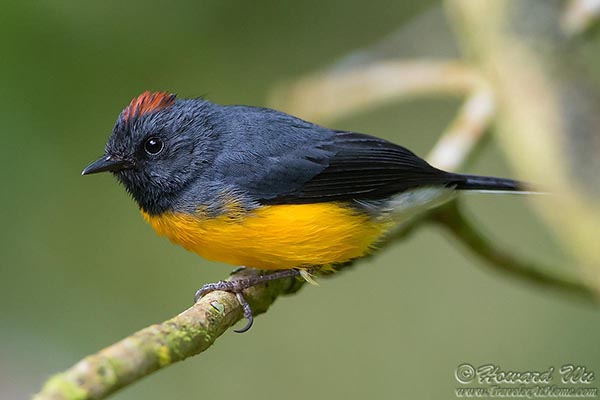
Slate-throated Redstart
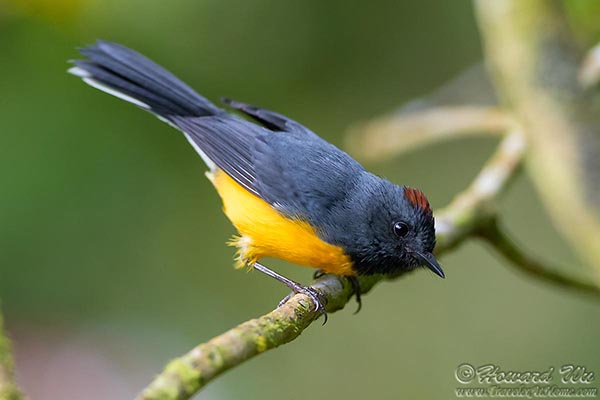
Slate-throated Redstart
Speaking of wood warblers, I did see a couple of wintering species, such as this Northern (?) Waterthrush and this Wilson's Warbler (I had seen them in North America).
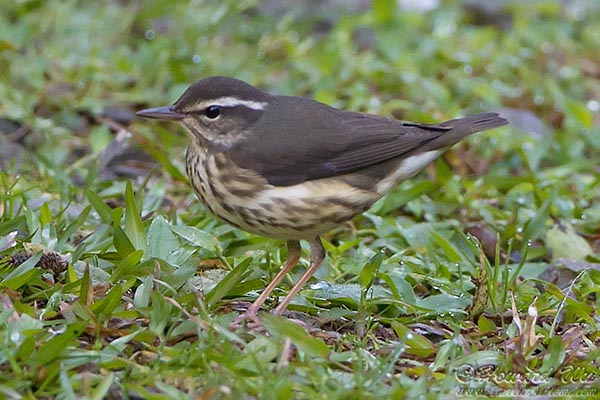
Waterthrush
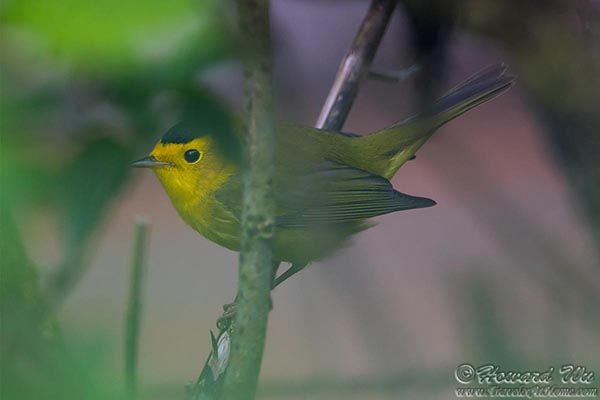
Wilson's Warbler
And this Tufted Flycatcher was also new too.
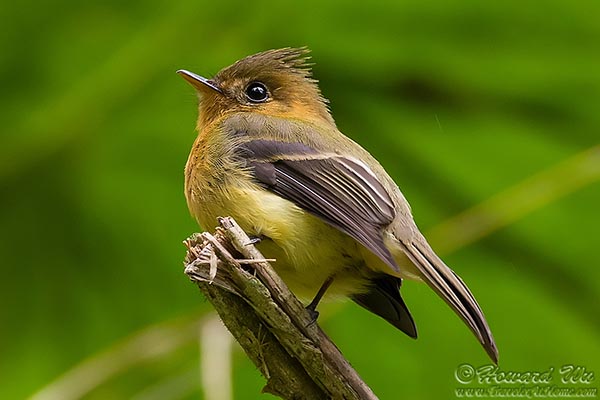
Tufted Flycatcher
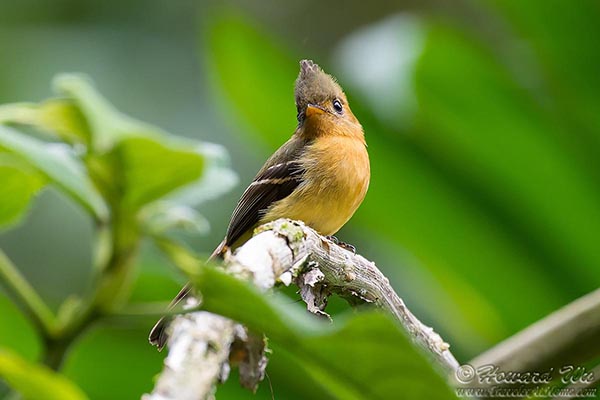
Tufted Flycatcher
After leaving Bosque de Paz, we did not get many more birds (we turned our attention to the tourist attractions -- volcanoes, coffee planations, etc). At Irazu Volcano, I did see some active birds -- these turned out to be Slaty Flowerpiercers again (the following picture is of a female).
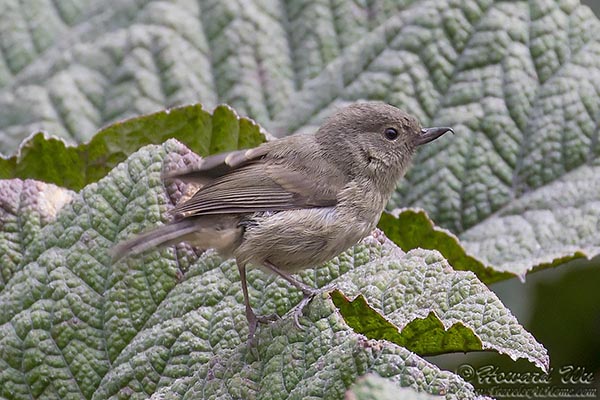
Slaty Flowerpiercer
At the Lankester Garden, I did see a Yellow-throated Euphonia in a tree, a bird that I had seen on my previous trip, but I was happy to see it again.
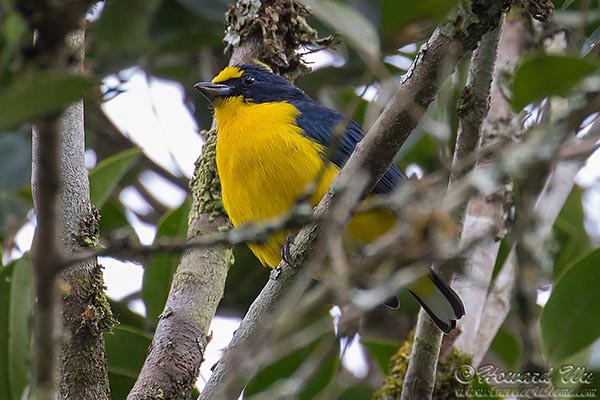
Yellow-throated Euphonia
At Poas Volcano, I saw one of the last exciting birds of the trip - a Black-billed Nightingale-thrush. This little and active bird was very bold, not afraid of people at all, sometimes it would get too close for my telephoto lens to get it within frame.
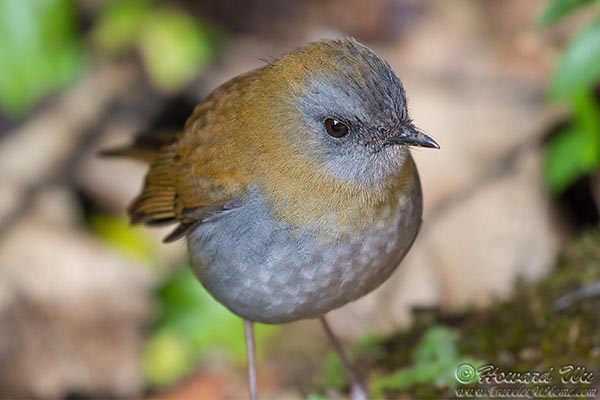
Black-billed Nightinggale-thrush

Black-billed Nightinggale-thrush
On my last morning in San Jose, I had another short, but fruitful outing: I photographed two warbler species and some other birds, including a new bird, the Blue-and-white Swallow (not shown).
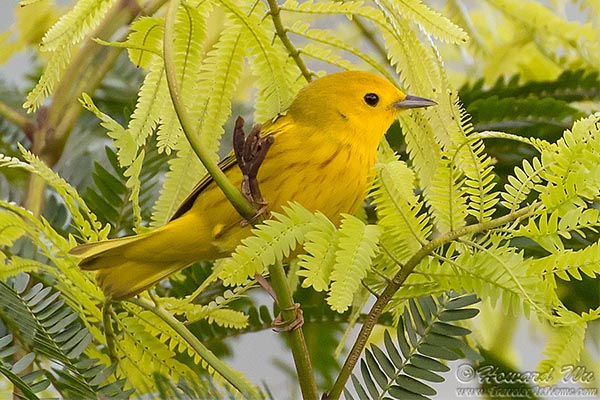
Yellow Warbler
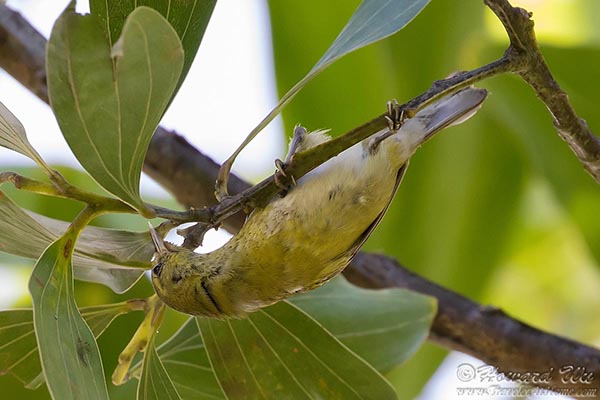
Tennessee Warbler
Most fittingly, one of the last bird I photographed was another Clay-colored Thrush, the national bird of the Ticos.
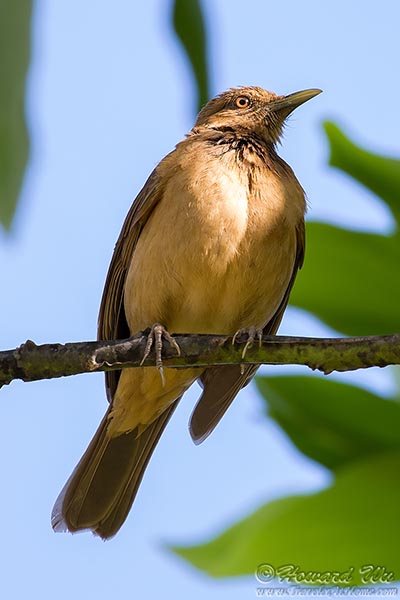
Clay-colored Thrush
